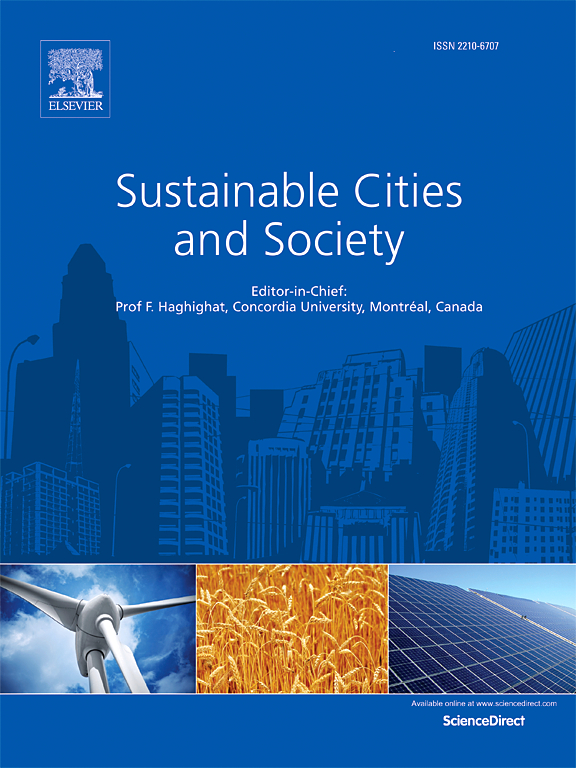R-ECO: An R script to measure the supply of urban ecosystem services in Europe
IF 10.5
1区 工程技术
Q1 CONSTRUCTION & BUILDING TECHNOLOGY
引用次数: 0
Abstract
Implementing Green Infrastructure (GI) can help achieve sustainable urbanism by addressing challenges such as land cover and climate changes through the supply of Ecosystem Services (ES). However, an accurate yet accessible means of determining the ES at small urban scales is lacking. In response, this research developed a tool to automate the measurement of ES supply at the district level, with a focus on the role of GI. This led to R-ECO, a script developed in the R's free software environment to process fifteen indicators representing provisioning (e.g., food supply, timber production), regulating (e.g., climate regulation, air purification, water flow control), supporting (e.g., biodiversity conservation, habitat connectivity) and cultural (e.g., recreation, noise management, aesthetic value) ES using spatial and statistical functions. Using Multi-Criteria Decision Analysis (MCDA) methods, the proposed indicators were combined to result in a single metric reporting the ES of urban districts. The tool was valid as designed for Europe as it is fed with data from open repositories on that continent. Still, it can be adapted internationally by incorporating region-specific or global datasets, thereby allowing for urban sustainability assessments in diverse geographical contexts. Testing R-ECO using Copenhagen (Denmark) as a case study proved its usefulness to identify areas that are deficient in ES due to various reasons such as poor climate regulation capacity or insufficiently accessible natural and seminatural areas. Therefore, public institutions concerned with the sustainability of their cities can turn to R-ECO to support the deployment of ES through the implementation of GI.
求助全文
约1分钟内获得全文
求助全文
来源期刊

Sustainable Cities and Society
Social Sciences-Geography, Planning and Development
CiteScore
22.00
自引率
13.70%
发文量
810
审稿时长
27 days
期刊介绍:
Sustainable Cities and Society (SCS) is an international journal that focuses on fundamental and applied research to promote environmentally sustainable and socially resilient cities. The journal welcomes cross-cutting, multi-disciplinary research in various areas, including:
1. Smart cities and resilient environments;
2. Alternative/clean energy sources, energy distribution, distributed energy generation, and energy demand reduction/management;
3. Monitoring and improving air quality in built environment and cities (e.g., healthy built environment and air quality management);
4. Energy efficient, low/zero carbon, and green buildings/communities;
5. Climate change mitigation and adaptation in urban environments;
6. Green infrastructure and BMPs;
7. Environmental Footprint accounting and management;
8. Urban agriculture and forestry;
9. ICT, smart grid and intelligent infrastructure;
10. Urban design/planning, regulations, legislation, certification, economics, and policy;
11. Social aspects, impacts and resiliency of cities;
12. Behavior monitoring, analysis and change within urban communities;
13. Health monitoring and improvement;
14. Nexus issues related to sustainable cities and societies;
15. Smart city governance;
16. Decision Support Systems for trade-off and uncertainty analysis for improved management of cities and society;
17. Big data, machine learning, and artificial intelligence applications and case studies;
18. Critical infrastructure protection, including security, privacy, forensics, and reliability issues of cyber-physical systems.
19. Water footprint reduction and urban water distribution, harvesting, treatment, reuse and management;
20. Waste reduction and recycling;
21. Wastewater collection, treatment and recycling;
22. Smart, clean and healthy transportation systems and infrastructure;
 求助内容:
求助内容: 应助结果提醒方式:
应助结果提醒方式:


